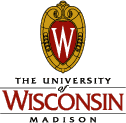The University of Wisconsin-Madison’s campus master plan, strengthened by broad community involvement, was unveiled after several months of study and numerous public meetings.
Community comments and meeting minutes
- Chancellor Wiley's letter to Madison mayor Dave Cieslewicz (PDF)
- Mayor Cieslewicz's letter to Chancellor Wiley (PDF)
- City of Madison Planning Unit's written response (PDF)
- Landmarks Commission's written response (PDF)
- Comments submitted via the Web
- Formal feedback statements from neighborhood associations (PDF)
- Neighborhood association meeting input
- Campus Planning Steering Committee
“We made a strong effort to engage citizens, on and off campus, in the planning process and the result will be a thoughtful long-term guide for our campus’ future,” says Alan Fish, associate vice chancellor for facilities.
The plan aims to make the campus more livable, workable and sustainable by examining existing and proposed buildings, outdoor spaces, transportation systems and utilities.
There were more than 200 meetings with hundreds of members of the public and interested groups as the plan evolved. That total includes meetings that have been held to elicit the thoughts of faculty, staff and students serving on master plan committees. More than 30,000 copies of master plan documents have been downloaded from this web site for review.
“Neighbors, local government officials and the campus community were heavily involved in providing feedback, and their ideas are central to our success in developing a 20-year plan for campus renewal and improvement,” says Fish.
The process was designed to ensure that there is wide community acceptance of a plan that will improve the landscape, research and learning environment on campus in future years.
The draft plan envisions major upgrades such as the redevelopment of the east campus area as an arts and humanities district connected by an East Campus Mall, creation of the Wisconsin Institute for Discovery in the 1200 and 1300 blocks of University Avenue, moving the McClimon Track and Soccer Complex to accommodate a cluster of new medical research and academic buildings, development of a West Campus Union and many other projects.
“The master plan provides a framework for future development that will serve our teaching, research and service mission,” says Gary Brown, director of planning and landscape architecture. “We want to create great new learning spaces while establishing more signature outdoor spaces that will enhance our spectacular setting.”



